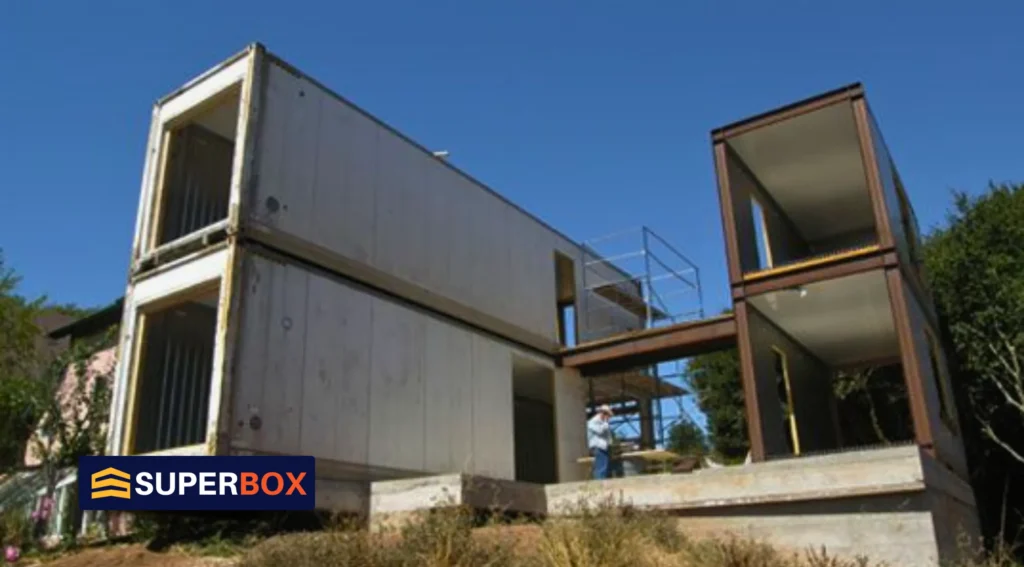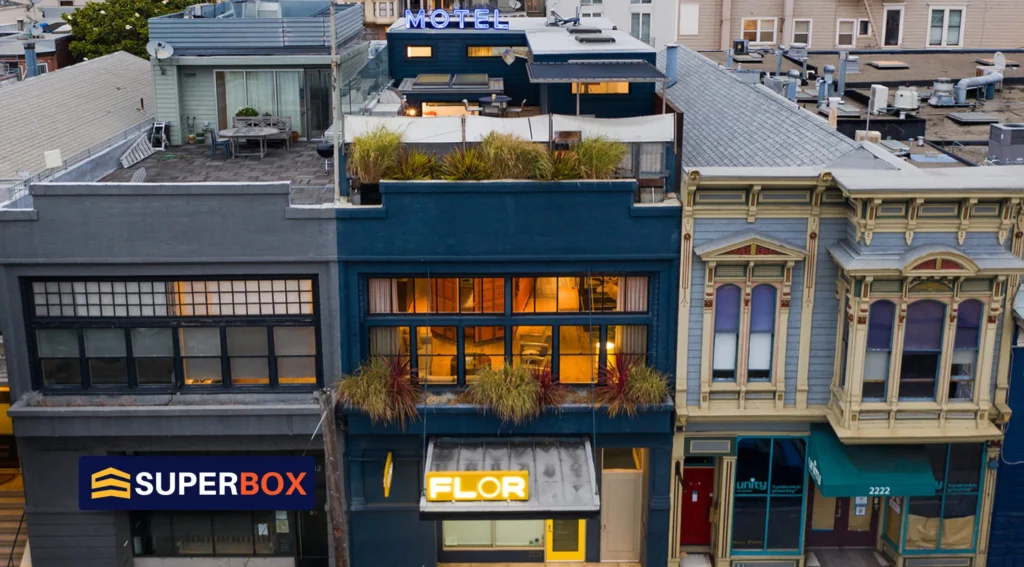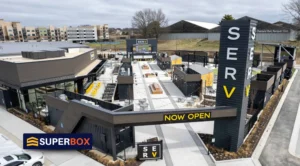San Francisco is famous for its stunning views and iconic landmarks, but it’s also known for its sky-high living costs. With real estate prices climbing and limited space available, finding affordable housing in the city has become increasingly difficult. But what if there was a solution that was not only affordable but also eco-friendly and modern? Enter shipping container homes—a new trend in San Francisco that’s changing the way people think about city living.
Shipping container homes are becoming popular in San Francisco for several reasons: they’re cheaper than traditional homes, they help the environment, and they offer stylish, contemporary designs that fit well with the city’s unique architecture. In this blog, we’ll take a closer look at why container homes are catching on in San Francisco, the benefits they offer, the different design options available, and what you should know if you’re thinking about building one yourself.
What Are Container Homes?
A shipping container home is exactly what it sounds like a home made from repurposed steel shipping containers. These containers, usually 20 feet or 40 feet long, are strong, durable, and originally used to ship goods all over the world. When used as homes, they offer a more affordable and eco-friendly option compared to traditional houses.
Shipping containers can be stacked or connected in different ways to create custom living spaces. From small, single-container homes to large, multi-container houses, there are endless possibilities for how they can be arranged and designed. Whether you want a cozy, minimalist space or a bigger, multi-story home, container homes offer a lot of flexibility and creative potential.

Why Container Homes Are Perfect for San Francisco
San Francisco’s housing crisis has reached a tipping point, with sky-high rents and an acute shortage of affordable housing options. The city’s narrow streets and steep hills limit the availability of large plots of land for development, making creative housing solutions like container homes an ideal option for maximizing available space.
Moreover, San Francisco is known for its commitment to environmental sustainability, making container homes a perfect fit. These homes allow the city to make use of an existing resource—steel shipping containers that would otherwise sit unused—helping to reduce waste and decrease the demand for new construction materials.
Container homes also align well with the city’s innovative spirit. San Francisco is a hub for creative solutions to modern challenges, and container homes provide an opportunity for residents and builders to experiment with cutting-edge, green construction methods.

What You Should Know Before Building a Shipping Container Home in San Francisco, California
Building a shipping container house in San Francisco offers a unique, sustainable, and cost-effective way to address the city’s housing needs. However, there are important factors to consider before you begin. Here’s what you should know:
1. Zoning and Permitting
- Local Regulations: San Francisco has strict zoning laws and building codes that must be followed. Make sure the land you intend to build on is zoned for residential use and that container homes are allowed.
- Permits: You’ll need to obtain various permits for construction, including building and possibly environmental permits. Work with an architect or contractor familiar with San Francisco’s requirements to ensure compliance.
2. Cost Considerations
- Initial Costs: Shipping container homes can be affordable, but the total cost depends on factors like site preparation, customization, and finishing. Expect costs to rise with the need for insulation, plumbing, electrical work, and foundations.
- Land Costs: Land in San Francisco is expensive, and this will likely be one of your biggest expenses. Consider whether you’re buying or leasing land and how it will impact your overall budget.
3. Design and Layout
- Customization: Shipping containers can be highly customizable. You can stack, link, or modify them to suit your space needs. However, the more customization, the higher the cost.
- Space Efficiency: Container homes are usually compact, so planning for efficient layouts and multi-functional spaces is key. Open-plan designs and smart storage solutions are important for making the most of limited space.
4. Structural Integrity and Insulation
- Strength and Durability: Shipping containers are strong and weather-resistant, but you’ll need to reinforce them and make adjustments for comfort. The structure may require welding, reinforcing, and additional support depending on the number of containers and the layout.
- Insulation: Containers can be hot in summer and cold in winter, so you’ll need high-quality insulation. Adding foam or spray insulation to the walls, floors, and ceilings will help create a comfortable environment.
5. Utilities and Infrastructure
- Water, Sewage, and Electricity: Like any home, container homes require access to essential utilities like water, sewage, and electricity. Ensure your site can support these utilities, or plan to install alternative systems like rainwater collection or solar panels.
- Energy Efficiency: Consider integrating green energy solutions such as solar panels, rainwater harvesting systems, or energy-efficient windows to make your home more sustainable.
6. Weatherproofing and Seismic Safety
- San Francisco’s Climate: San Francisco’s weather can be unpredictable, with fog, wind, and varying temperatures. You’ll need to ensure that your container home is weatherproofed against moisture and wind.
- Earthquake Resistance: San Francisco is in a seismic zone, so earthquake safety is a must. Shipping containers are sturdy, but you’ll need to follow seismic building standards and likely reinforce the foundation to meet these safety requirements.
7. Sustainability and Environmentally Friendly Features
- Environmental Impact: One of the biggest benefits of container homes is their sustainability. By reusing shipping containers, you’re reducing waste and contributing to eco-friendly building practices. Consider adding green roofs, solar power, and recycled materials for an even smaller environmental footprint.
8. Community and Aesthetics
- Neighborhood Impact: While container homes are becoming more popular, they may still be unusual in some neighborhoods. Think about how your design will fit with the surrounding architecture, and be prepared for possible resistance or questions from neighbors or city officials.
- Aesthetic Design: Container homes are often praised for their modern, industrial look. However, be mindful of how the design will blend with the aesthetic of your neighborhood, especially in areas with historic or traditional architecture.
9. Timeline
- Construction Time: Shipping container homes can be built relatively quickly compared to traditional homes, but they still require time for design, permits, and construction. Expect the process to take several months, depending on customization and any delays in permits.

Notable Container Home Project in San Francisco
In San Francisco, An eye-catching house is a refrigerated shipping container home that uses three pre-insulated containers to create a 1350-square-foot, three-bedroom house. These containers, built to carry heavy loads and keep things cold, are ideal for building since they meet all building codes.
Recycling these containers is a smart and resource-efficient choice. They provide a strong, weatherproof exterior, act as insulation, and make up the main structure of the house. Only a small amount of insulation is needed for the roof and floor, and framing is added only for bay windows and interior walls. Waterproofing is required only around windows and doors.
Conclusion
Shipping container homes are an affordable, eco-friendly, and modern solution to San Francisco’s housing challenges. They offer a creative way to build unique living spaces in a city with high real estate costs and limited space. While building one requires careful planning—especially with zoning laws, costs, and safety—container homes are a flexible and sustainable option.
If you’re considering a container home, make sure to research local regulations and work with professionals to make the process easier. With the right planning, a container home can be a stylish and cost-effective way to live in San Francisco.
Solving San Francisco's Housing Crisis with SuperBox!
As San Francisco faces a growing housing crisis, container homes are becoming an innovative and sustainable solution for affordable living. At SuperBox, we specialize in providing high-quality shipping containers for sale in San Francisco, CA, that can be transformed into eco-friendly, modern homes. These durable, versatile containers are not only strong and long-lasting, but they can also be customized to fit any design you have in mind. This makes them a perfect choice for creating stylish, functional living spaces in the city.
Whether you’re interested in building your own container home or need a shipping container for another project, SuperBox is here to help. Contact us today at 1-866-696-9269 to learn more about our containers and how we can assist you in bringing your vision to life!
Frequently Asked Questions About Shipping Container Homes in San Francisco, CA
Are shipping container homes allowed in San Francisco?
Yes, but there are strict zoning laws and building codes in San Francisco that must be followed. Make sure the land you’re planning to build on is zoned for residential use, and check if container homes are allowed in that area. You’ll need to get the proper permits before construction can begin.
Do shipping container homes need special permits?
Yes, you will need to obtain various permits for construction, including building, plumbing, and electrical permits. If you plan to add eco-friendly features like solar panels, you may also need additional permits for those systems. Working with an architect or contractor familiar with local regulations can help ensure your project meets all requirements.
Are shipping container homes energy-efficient?
Yes, shipping container homes can be highly energy-efficient. You can add features like solar panels, energy-efficient windows, and insulation to reduce energy consumption. Many container homes also use green roofs or rainwater harvesting systems to further improve sustainability.
Are shipping container homes earthquake-resistant?
Yes, shipping containers are strong and can be built to withstand earthquakes, which is important in San Francisco’s seismic zone. However, you will need to follow specific seismic building codes to ensure the foundation and structure are properly reinforced.





